Adversarial Transferability in Wearable Sensor Systems
Introduction
This article is brief summary of our paper on “Adversarial Transferability in Wearable Sensor Systems.” In this work, we have explored the topic of adversarial transferability from viewpoints that we believe are novel have not been discussed yet. But before we present our results and findings, let’s first understand a few topics and the framework of the paper.
Adversarial Transferability
For the uninitiated, adversarial transferability captures the ability of adversarial examples that makes them transfer between independently trained models of different architectures. In almost all works on adversarial transferability, the discussion is usually carried out from the perspective of models. We believe in understanding adversarial transferability fully, and in uncovering the reasons behind their existence in the first place, we need to consider other avenues such as the datasets that are used to train the machine learning models. To this end in our work. We have tried to explore adversarial transferability and give a comprehensive discussion that takes into account the model and the dataset with wearable sensor systems as a case study.
Classifiers and Attack Methods
In our work we have used the following classifiers:
- SVC: Support Vector Classifier
- RFC: Random Forest Classifier
- KNN: k-nearest neighbor Classifier
- DTC: Decision Tree Classifier
- LRC: Linear Regression Classifier
-
DNN: Deep Neural Network and attack methods:
- FGSM: Fast Gradient Sign Method
- BIM: Basic Iterative Method
- MIM: Moment Iterative Method
- SMM: Saliency Map Method
- CW: Carlini Wagner
You can find more details about them in our paper.
Discussion
In this work, we have explored adversarial transferability from the following perspectives.
- Transferability between machine learning models
In this case, we have trained models of different architectures independently on the same training set and evaluated them on adversarial examples computed using the deep neural network. The dataset we have used consists of features extracted from the time-series signals from different sensors for human activity recognition. Figure 1 shows the training and test set accuracy of different classifiers. And figures 2 and 3 show the misclassification rate and the success rate of untargeted and targeted (with target class sitting) adversarial examples computed using the DNN model for all the different classifiers. As we can confirm, the transferability of both untargeted and targeted adversarial examples are excellent in this scenario.
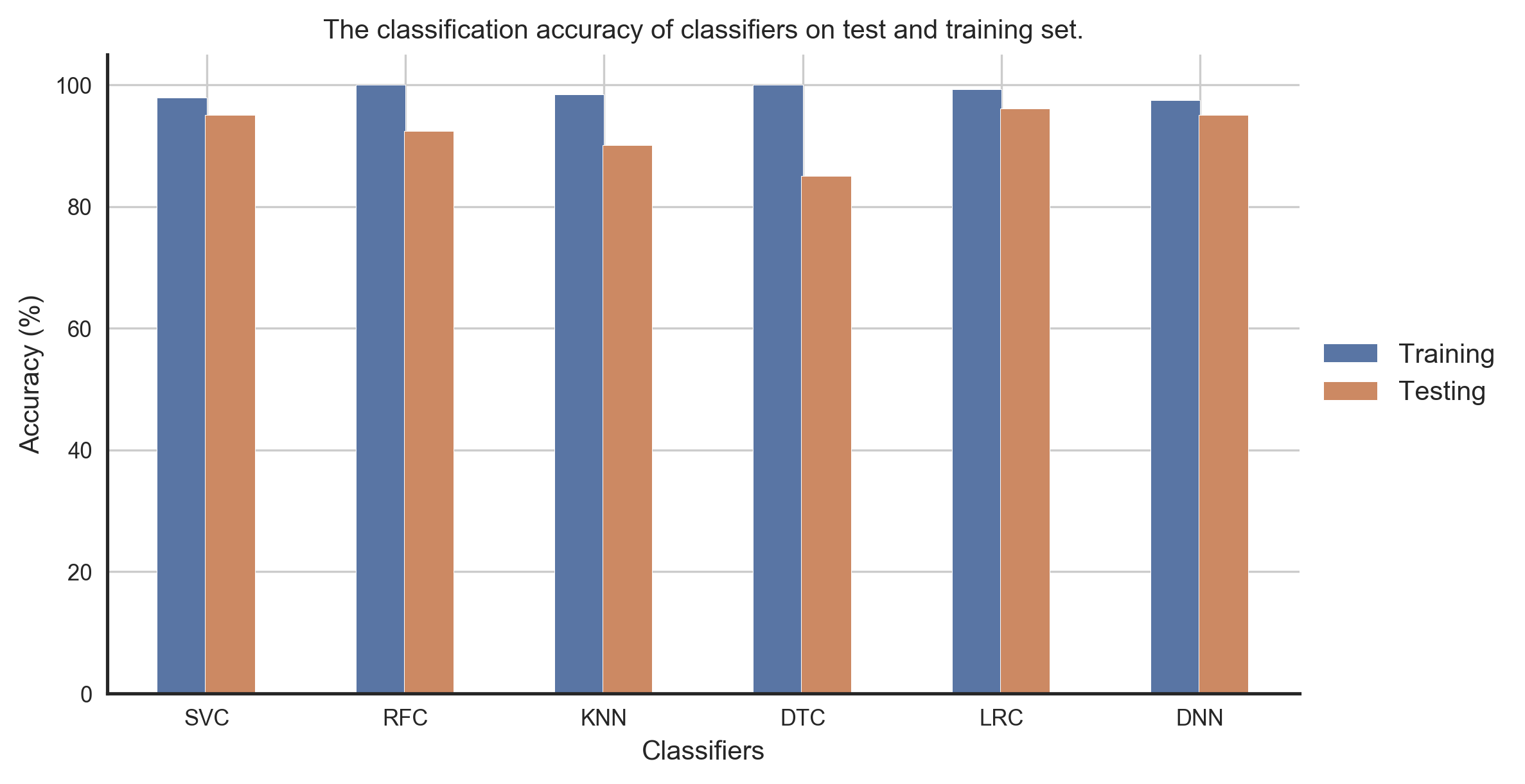
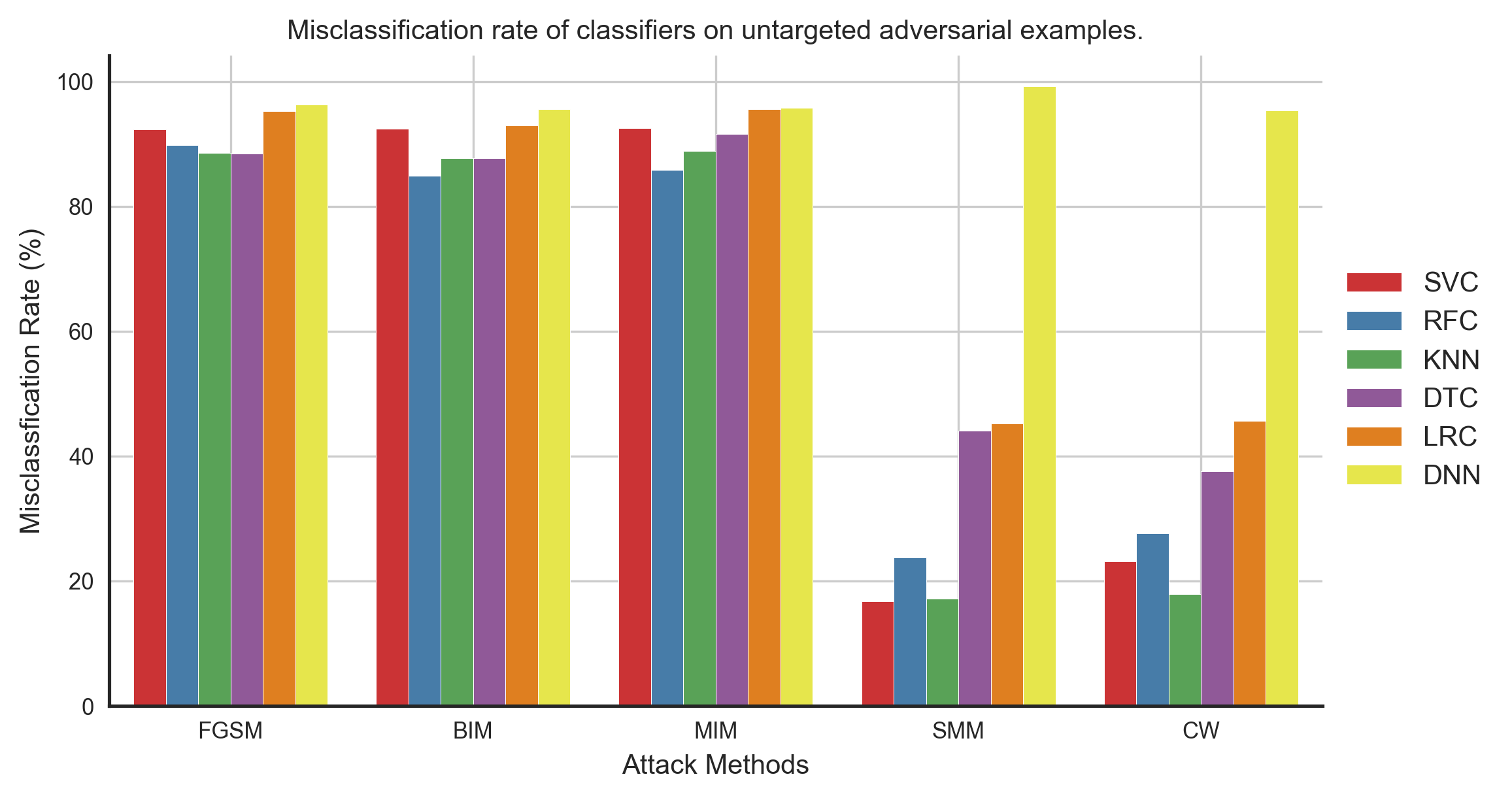
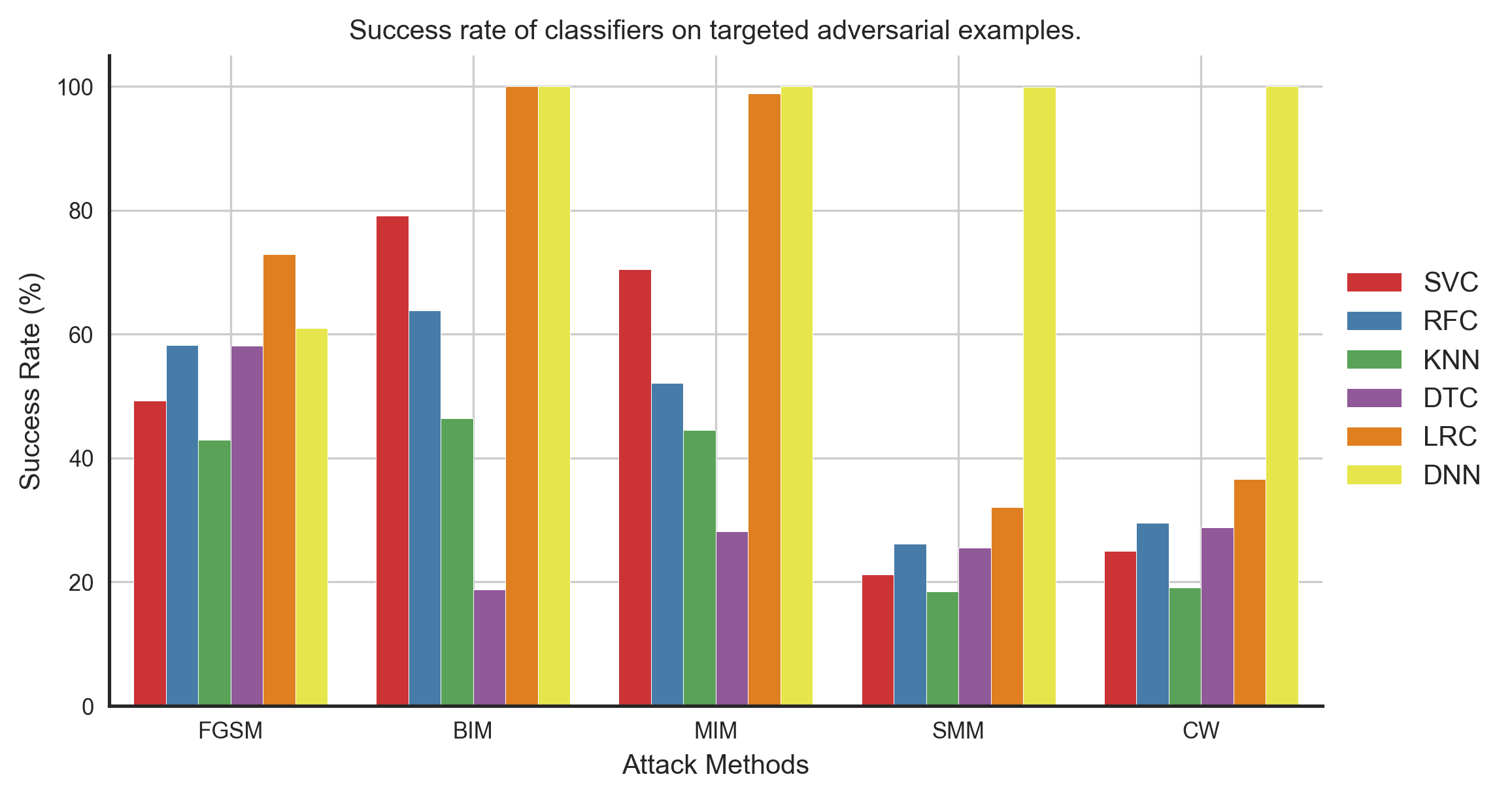
-
Transferability Across Users
By subjects, we mean volunteers used in the study for data collection. For example, to collect sensor data for human activity recognition, labs recruit individuals to wear sensor systems on them. The collected sensor data is then used to train machine learning systems, which are then deployed in real-life cases in applications such as health monitoring, medicine adherence, etc. With transferability across subjects, we wanted to analyze how the different characteristics of individuals used for data collection affect the transferability of adversarial examples.We divided the MHEALTH dataset into two groups based on the subject ID: data from even ID subjects into one group and data from odd ID subjects into another. We then model on these datasets having the same architectures and parameters. We computed untargeted and targeted adversarial examples using the even model (aptly named because it was trained on the data from even ID subjects :)) and evaluated these adversarial examples on both even and odd models. Figures 4 and 5 show the performance of untargeted and targeted adversarial examples on these models, respectively.

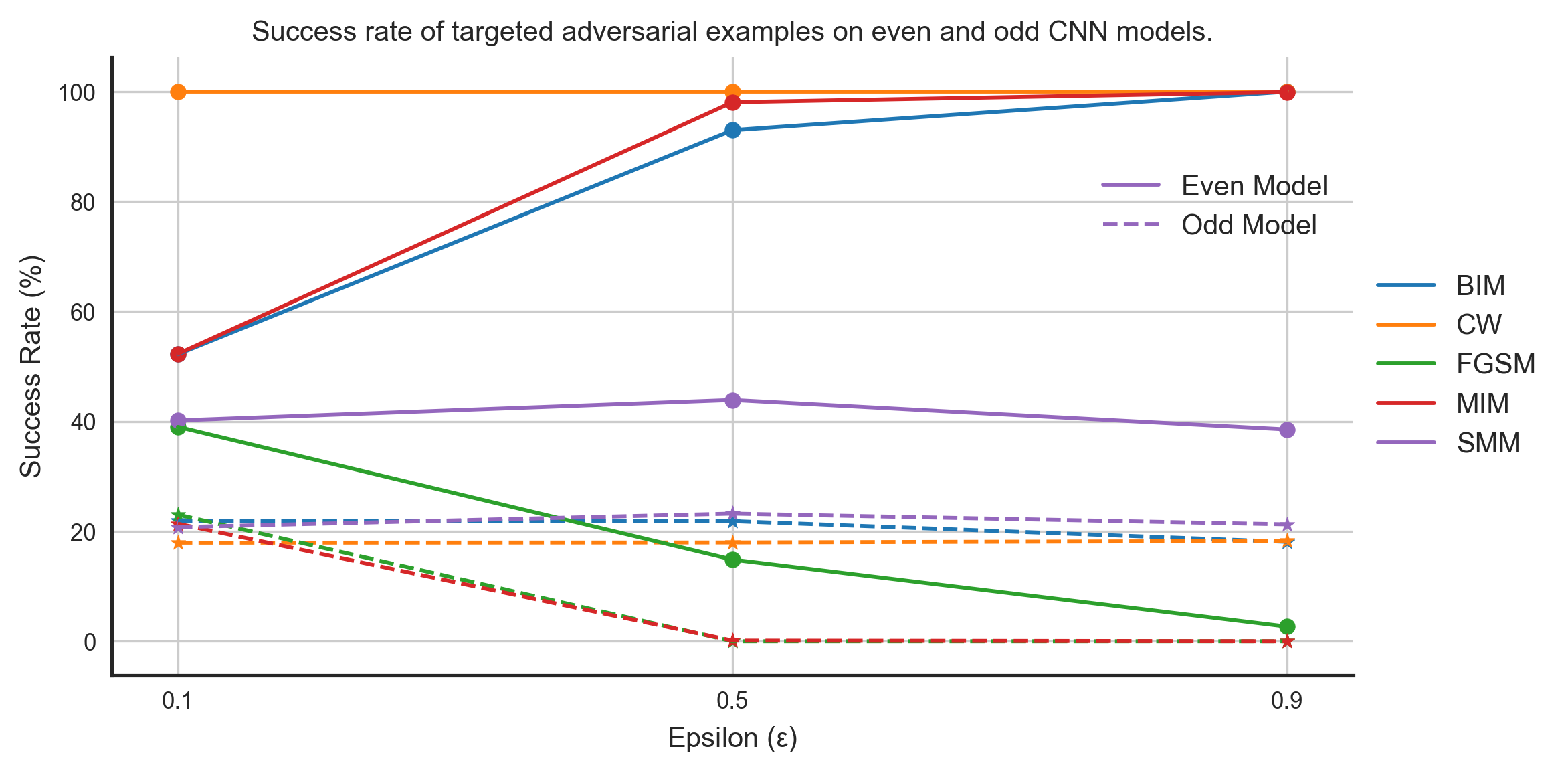
-
Transferability Across Sensor Locations
In wearable systems, sensors can be placed at different body positions to measure the same physiological variation and bio-markers. For example, to detect human activity, a person can use wearable devices that can be placed at different body positions. The device can be worn on the wrist like a watch, placed in a pocket, worn around the ankle, attached to shoes and clothes, wrapped around the chest, and in many more ways. This numerous ways in which the sensor can be placed on the human body introduce artifacts and biases in the sensor reading than can cause problems for an adversary. Therefore, it becomes crucial to study adversarial transferability considering this variability in wearable sensor systems.The MHEALTH dataset has readings from three same-type accelerometer sensors placed at different body positions. The first sensor is wrapped around the subject chest, the second is worn by the subject on the right wrist, and the last one is worn on the left ankle. To evaluate adversarial transferability across sensor locations we train machine learning models on the data from chest and right wrist sensors. We will use the chest model to compute adversarial examples and then test them on the right wrist model. Figures 6 and 7 show the performance of untargeted and targeted adversarial examples computed using the chest model on chest and right wrist model.

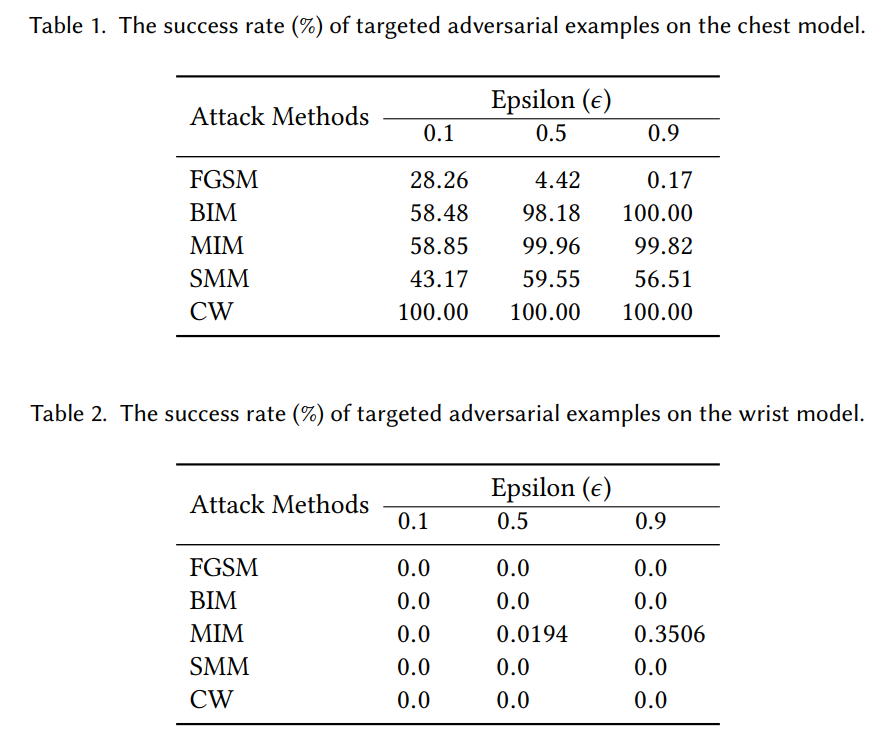
- Transferability Across Datasets
Finally we evaluated the transferability between datasets, which will consider all the cases we have discussed above and many more. We trained models on the UCI and the MHEALTH model and used UCI model to compute adversarial examples for both untargeted and targeted cases. Figures 8 and 9 shows the performance of these models on the adversarial examples.
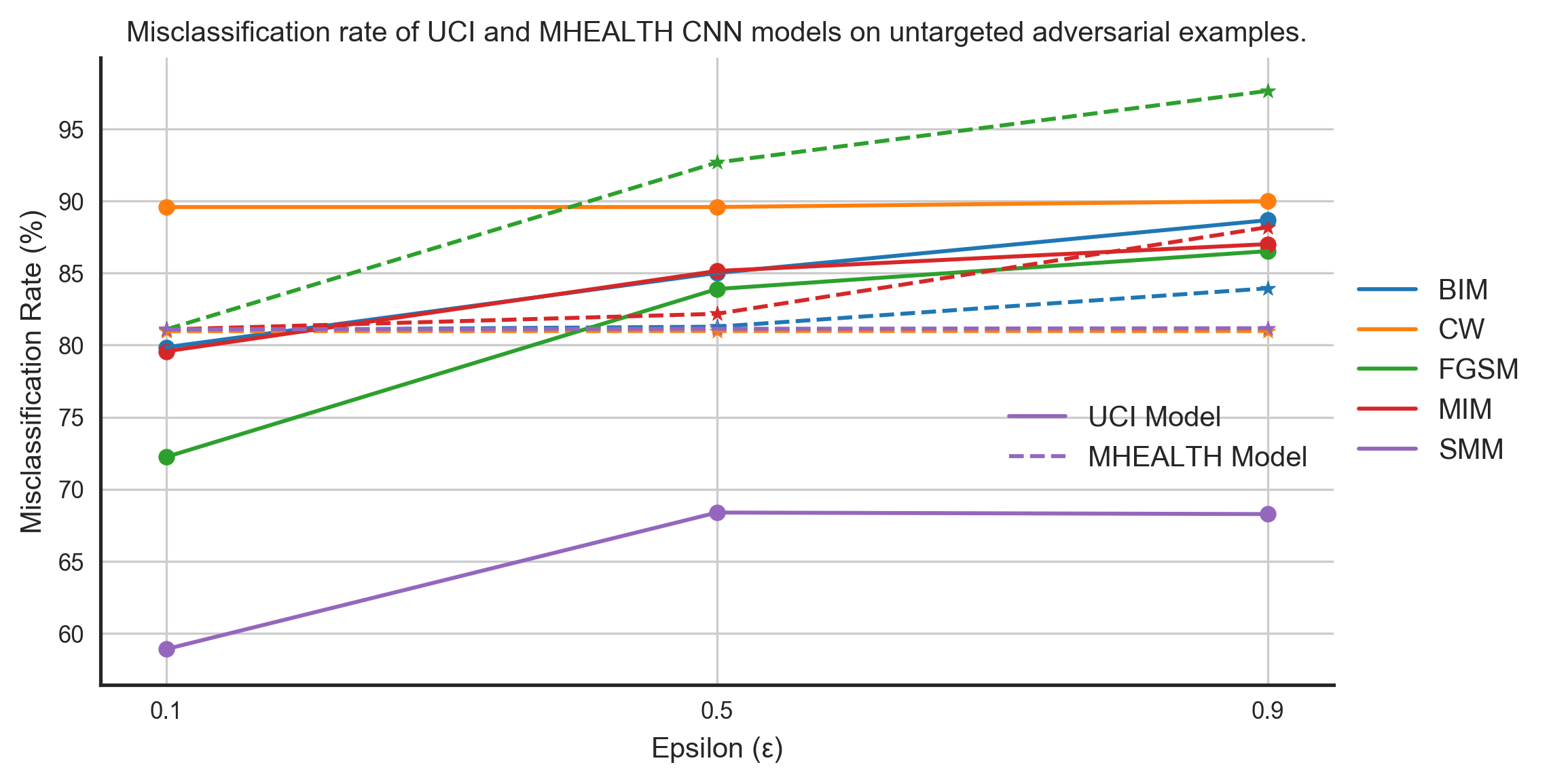
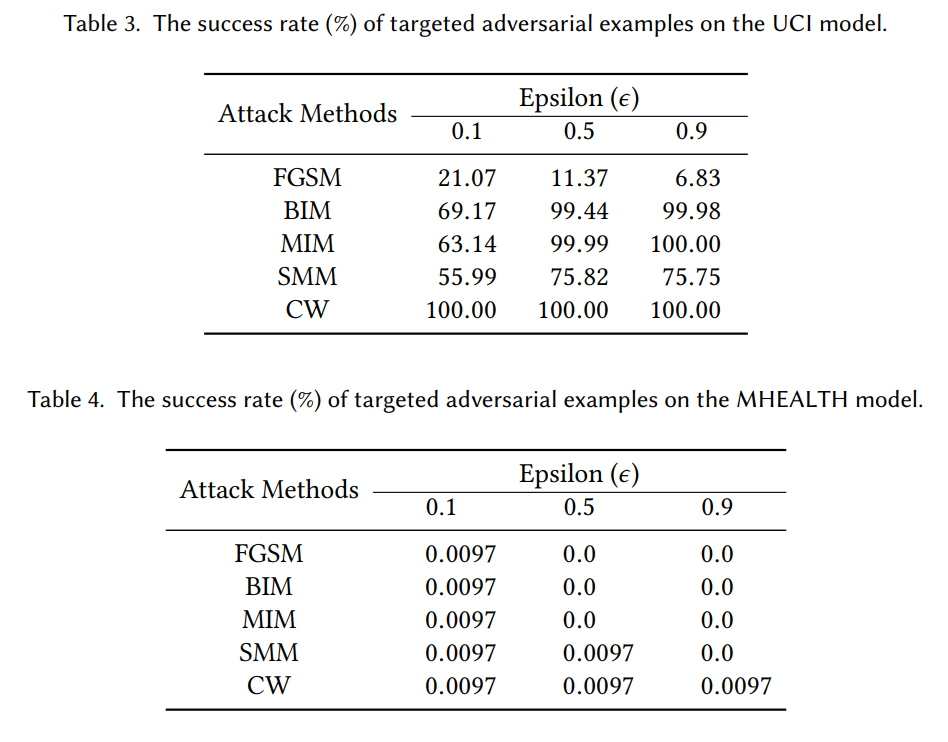
Conclusions
Our aim in this work was the extend the discussion of adversarial transferability beyond the current discussion of the inter-model scenario and demonstrates how adversarial transferability fares in new conditions. We think we have done what we intended to do from our results and discussion. We encourage the reader to check out our paper for more details.